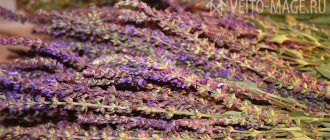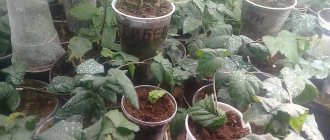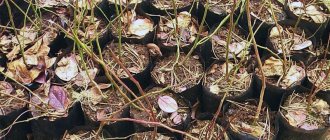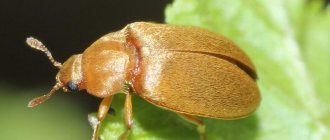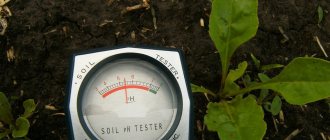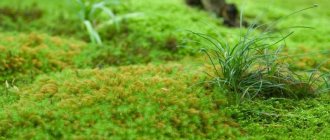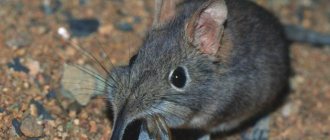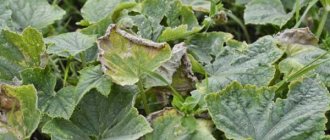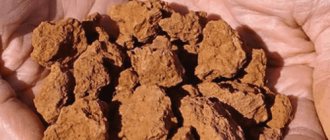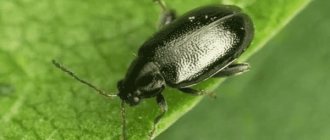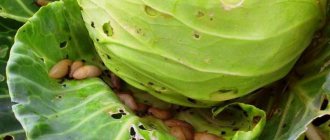Wheatgrass grows on almost every summer cottage and causes a lot of inconvenience to the gardener. The weed quickly grows in all beds and rows, and besides, it is a perennial, so it is not so easy to remove it. How to get rid of wheatgrass in the garden once and for all using folk remedies will be suggested by the advice of experienced gardeners. Their methods are highly effective, but easy to use and require minimal financial investment.
Creeping wheatgrass: what it looks like in early spring, how it reproduces, on what soils it grows
In spring, when the temperature has not yet risen above 4 °C, seed germination begins. Wheatgrass leaves are among the first to emerge from the ground. It is not for nothing that the plant is classified as a harmful weed. This becomes clear after familiarizing yourself with its characteristics:
- grows on any type of soil;
- its development is not affected by the level of soil acidity;
- propagated by seeds and vegetatively;
- tolerates long-term drought well;
- does not freeze;
- aggressive, quickly conquers space.
In spring, creeping wheatgrass can be recognized by its pointed, elongated leaves vigorously protruding from the ground. If a young plant is pulled out, it is easy to appreciate the power of the rhizome; it produces new shoots all season (spring-autumn), capturing new territories.
The cereal herbaceous plant creeping wheatgrass has a powerful rhizome. The roots of one plant spread over a long distance (3 m), they penetrate to a depth of 15-20 cm. The above-ground part quickly grows. The leaves are linear, green, have a bluish tint, maximum length is 1.5 m.
Rhizome structure:
- roots;
- nodes;
- accessory buds.
Important!
The rhizome of wheatgrass is strong and can penetrate soil of any density and turf formed by the roots of other herbaceous plants. New plants are formed from adventitious buds. For vegetative propagation, a small piece of rhizome is sufficient. The weed blooms, producing spikes in which seeds form. They spread over long distances, distribution routes: wind, birds. Seeds can remain viable for more than 10 years.
Having captured the territory, creeping wheatgrass forms dense turf and intensively absorbs nutrients from the soil. List of negative impacts of the weed on the environment:
- absorbs large amounts of nutrients and moisture;
- depletes the soil;
- oppresses plants;
- releases toxic substances that have a negative effect on other herbaceous plants.
It is difficult to get rid of wheatgrass, it does not freeze in winter, does not fade in summer, insects do not like it, and it is not afraid of any types of infections.
Distinctive characteristics of the weed
Wheatgrass is a creeping perennial weed from the grass family. A plant with straight ascending stems reaches a height of 1.2 m. The flat leaves are colored green or grayish. The width of narrow rough plates is from 5 to 10 mm. Popularly known by the names:
- dog tooth;
- sponge;
- plover
The creeping rhizome actively grows under the soil at a depth of up to 20 cm. The system prefers to develop in a horizontal plane and covers an area of 3 square meters. Branching underground parts rise to the surface, give life to new specimens and suck out water and nutrients. The weed lives for 6 years, but during this period it manages to suppress cultivated species on the site. Rigid stems find their way in soil of any density.
The plant blooms from June to August and produces an apical spike typical of cereal crops. It looks like a light panicle (up to 15 cm long), consisting of flat scales. Each specimen consists of 10 small buds. The fruits ripen in autumn and oblong seeds are formed. Reddish or purple flower stalks indicate maturity.
How to get rid of wheatgrass: chemicals, herbicides, wheatgrass poison
The weed control industry produces special preparations - herbicides. They act quickly, this has been tested in practice by summer residents. Weed control chemicals are successfully used by large and small agricultural enterprises growing various crops (vegetables, grains).
Any poison sold in stores is distinguished by the way it affects the weed, the effect is:
- solid;
- selective.
Preparations of the first type are capable of destroying any plant, including cultivated ones, they are used in the spring before sowing or after the autumn harvest. The mechanism of action is of two types: contact, systemic.
Reference. The contact preparation destroys only those stems and leaves that have been in contact with the toxic solution.
Systemic herbicides are used to kill wheatgrass. They, penetrating the plant, destroy its above-ground and underground parts.
Selective chemicals have a negative effect on a certain category of weeds; the list is specified in the instructions for use. These pesticides are characterized by a gradual effect; the weed dies 2 (3) weeks after treatment. Symptoms of death appear gradually:
- stops growing;
- leaves and stems turn yellow;
- the root dies;
- the weed dries up.
Selective herbicides can be used throughout the summer season, spraying wheatgrass leaves when they grow to 10-15 cm.
Chemical influence - looking for quality herbicides
As the practice of combating pest plants shows, the balanced use of chemicals is very effective against such “unyielding” plants as creeping wheatgrass. In specialized online stores you can find such effective herbicide preparations as
- Tornado;
- Agrokiller;
- Hurricane Forte and Fusilade Forte;
- Roundup.
These preparations are widely used by experienced gardeners. They have proven effectiveness, are sold at reasonable prices and do not cause too much damage to the soil and its inhabitants. When working with these reagents, it is necessary to observe safety precautions, in particular, use a mask or respirator, goggles, clothing made of dense fabrics, and the reagent should be sprayed only with a special capsule device.
How exactly to spray a garden or plot depends on the size of the garden, the product chosen and the number of weeds. As a rule, the instructions for chemical herbicides indicate the dosage, the maximum area covered and other recommendations. The only significant disadvantage of using such preparations is their negative, especially in a short period of time, effect on the soil.
It is strictly not recommended to spray chemicals on any area more than once every 2-3 years. Otherwise, the soil will become highly oxidized, and fruit crops will receive less nutrients or stop developing altogether.
How to destroy wheatgrass in the garden: mulch, weeding and a miracle weed shovel
You can deal with wheatgrass thickets without chemicals. Past generations of vegetable growers have done this successfully. To exist, this weed must have:
- air;
- light;
- moisture.
Mulch is a remedy that will strip it of everything. An area overgrown with wheatgrass should be covered with mulch in the spring, after the first shoots appear. It is best to use sawdust. Over the summer they will fulfill their task - rid the earth of a malicious weed, and by autumn they will rot and can be used to improve the structure of the soil.
Work plan:
- cover the area with sawdust in early spring, while it is wet, so that the sawdust absorbs moisture, depriving the wheatgrass of nutrition;
- lay a layer of thick black film or sheets of roofing material on top of the mulch;
- remove mulch in the fall;
- dig up the soil, removing dried remains of the weed.
Important! The soil under such a layer cake (mulch, film) warms up and, thanks to the greenhouse effect, the weed is gradually destroyed.
Many people prefer the most labor-intensive type of weed control - manual removal of the plant along with the rhizome. There are special miracle shovels on sale for fighting wheatgrass, but if you don’t have such a device on your farm, you can get by with a pitchfork.
The soil needs to be dug up many times throughout the season, starting in the spring. Any sprouts that come across must be pulled out of the soil along with the roots. It is advisable not to damage the rhizome; the remaining pieces will send out new shoots.
Fighting wheatgrass in the garden: Roundup
Glyphosate is the main working component of Roundup. It has long been recognized as the most effective means for destroying wheatgrass thickets. All herbicides containing glyphosate have been used successfully to control wheatgrass. Treatment is carried out with a solution during the active growing season.
To prevent beneficial crops from being harmed by the herbicide, they are covered with film. Roundup is a systemic drug that slowly destroys the weed from the inside. The process can last up to 2.5 months. Proper use of herbicide allows you to get rid of the weed without negatively affecting crop plants and soil.
Wheatgrass Remedy: Hurricane
This is a non-selective drug containing glyphosate. That is why Hurricane is 100% effective in the fight against wheatgrass.
Advice! Add urea to the Hurricane solution (100 g per 10 liters of solution), this will speed up the death of wheatgrass.
Apply the product during the spring preparation of the soil for planting. Valuable properties of the herbicide:
- the solution tightly envelops the surface of the leaves;
- quickly absorbed;
- the inhibitory effect on the weed begins 3 hours after treatment;
- the first results are visible after 7 days;
- final death occurs after 3 weeks.
Green manure against wheatgrass
For supporters of natural farming, green manure is the main assistant that is used to destroy creeping wheatgrass. Weedy areas are sown:
- phacelia;
- rye;
- peas;
- rapeseed
In the fall, after harvesting, the area needs to be shallowly dug (ploughed) and sown with seeds of any green manure. As they grow, they inhibit weeds and at the same time perform a number of positive functions:
- clean the soil from infections and harmful insects;
- loosen heavy soils;
- increase fertility.
Measures to prevent the appearance of weeds ↑
To maintain a well-groomed dacha, along with control methods, you need to adhere to some preventive measures for the appearance of weeds:
- Along the perimeter of the site, sow a strip of land with bluegrass or clover.
- Cover the paths with sawdust from straw or mulch.
- Weed rhizomes should not be added to the compost heap - even when completely dry, they retain the ability to germinate throughout the year. The roots must be dried and burned.
- Contaminated soil should not be brought into the garden or vegetable garden.
- It is undesirable to use fresh manure as a fertilizer - there is a high probability that it contains remains of roots and seeds of unwanted plants.
- Closed plantings reduce the amount of weed germination. However, berry crops should not be planted too close to each other. It is recommended to cover wide row spacing with polypropylene mats.
- To prevent weeds from entering from neighboring dachas along the fence, you can dig a trench 30-40 cm deep, cover one wall with polyethylene and cover it with earth.
Demarcation of the area with polypropylene tape
The ability of seed and vegetative propagation allows creeping wheatgrass to occupy a large area of the garden in a short time, displacing cultivated plants. However, the weed also has weak spots. Using different control methods to influence its weaknesses, it will be possible to eradicate the pest from the dacha.
Remedy for wheatgrass on potatoes
A potato field can be treated with continuous action herbicides in the spring a week before planting or in the fall, when the entire vegetable crop has been harvested. Apply:
- Anti-weed;
- Hurricane;
- Roundup.
In the summer, when potatoes begin to grow, Lapis lazuli is used. This is a selective herbicide available in powder form. The packaging is different, which allows the drug to be used by summer residents and large farmers. The product can be used several times per season.
You may be interested in: Green manure: types and rules of useInstructions for using the drug Roundup against weeds, reviewsHow to deal with wheatgrass on the site: proven methods
Important! Lapis lazuli can be used in fields planted with early ripening potato varieties.
Exposure to the herbicide occurs through the roots through the soil. The regrown shoots of the weed die within 3 weeks, the protective effect lasts about 1.5 months.
Is it possible to protect strawberries from weeds?
Weeds in strawberry beds are a common occurrence. There are three ways to cope with this problem: mulching the soil, weeding, and treating with herbicide solutions.
In households, it is customary to fight weeds with the help of an ordinary hoe. Weeding helps get rid of weeds only for a few days. A longer period of protection provides soil mulching for strawberries. True, over a large area this method is too expensive, and it also requires drip irrigation systems.
It is much easier to treat strawberries with a herbicide solution. Various herbicides are produced with contact or systemic, continuous or selective action. All these chemicals can protect strawberry beds for the entire growing season. True, each type of herbicide has its own rules of application.
Considering the fact that strawberries are a perennial crop that grows in the same place for several years, it is better to use systemic selective herbicides to treat and protect against weeds.
Such preparations are sold in the form of a powder or a concentrated emulsion or suspension, and before use they must be diluted with water.
Newly emerging weeds are sprayed with a herbicidal solution in early spring, before strawberries bloom, or the plantings are treated in the fall, after harvesting. If the beds are heavily clogged with various grasses that take away nutrients and water from the strawberries, then treatment with a selective herbicide can be carried out in the summer.
How to get rid of wheatgrass in raspberries: herbicide
Raspberry plantings are regularly fed with organic matter, which promotes the appearance of wheatgrass in the inter-row spaces. It grows quickly, its roots are tightly intertwined with the roots of raspberries. The process of removing creeping wheatgrass from raspberry plantations is labor-intensive.
On a note! You can do without chemicals by using mulch, filling the rows with sawdust and straw.
Usually, local treatment of wheatgrass in raspberries is carried out with a herbicide solution. Continuous action drugs are effective:
- Hurricane Forte;
- Tornado;
- Agrokiller;
- Roundup.
It is recommended to treat the plantations with chemicals in the fall, when the berries are harvested.
Review of herbicides for strawberries
Throughout the growing season, strawberries have many enemies. Weeds take away nutrients and water, collect dew on leaves and promote the development of fungal infections. Insects eat leaves and berries. Fungi affect foliage, roots and lead to the appearance of mold and rot on the fruit.
All these problems can be combated with the help of chemicals: fungicides (for fungi), insecticides (for insects) and herbicides (for weeds).
Tiovit Jet
It is a sulfur-based fungicidal powder that protects strawberries from powdery mildew and other fungal diseases. The drug is used as a remedy against ticks. In addition, sulfur itself is one of the components necessary for the normal growth of strawberries.
The powder is dissolved in water, after which the strawberry leaves, dry from dew, are treated with the working solution. The released sulfur disrupts the life processes of pathogenic cells. True, the drug only lasts 1-2 weeks. Rainfall washes the sulfur off the leaves. This drug does not affect weeds.
Nuclear mixture
This is a mixture of various drugs that can be bought at any pharmacy. All substances are dissolved in water, and the prepared solution is sprayed on strawberry beds before or after flowering. The nuclear mixture helps protect strawberries from fungal diseases and insects (weevils, ants, aphids). True, this remedy does not work on weeds.
Recipe for preparing the mixture:
- 40 liters of water;
- 80 milliliters (1 bottle) birch tar;
- 25 milliliters of iodine (1 bottle);
- 10 grams of boric acid (1 sachet);
- 40 milliliters of 10 percent ammonia solution (1 bottle);
- 30 milliliters of fir oil (1 bottle).
A glass of the resulting mixture is diluted in a bucket of water and sprayed on the strawberry beds. This solution can be used to treat the entire vegetable garden. A nuclear or hellish mixture will improve the quality of fruits and increase the yield of all crops.
Other means
Weeds on strawberries need to be controlled with herbicides. Lontrel 300 will protect against wheatgrass, knotweed, sow thistle, dandelion, chamomile, and plantain. You can get rid of annual and perennial weeds using the herbicides Goltix and Betanal. Strawberry beds are sprayed with these substances at the very beginning of weed growth.
Trifluralin is used a month before planting seedlings. Tornado, Roundup, Glyphosate are used during the period of active growth of weeds. Young strawberry plantings can be treated with the herbicides Daktal, Phenmedifan, Desmedifam. In summer, PAB and Prism will help get rid of weeds.
source
It is difficult to clear the ground of creeping wheatgrass. This malicious weed lives everywhere. Farmers are putting a lot of effort into its destruction. A review of the most common weed control methods will help you choose the most suitable one.
How to deal with wheatgrass on the lawn
With the right approach, the lawn is sown on soil treated with herbicides (Tornado, Agrokiller). This makes further maintenance easier and guarantees the quality and beauty of the grass surface. It is necessary to remove wheatgrass from the lawn in early spring after individual specimens appear.
The weed must be dug up along with the roots without damaging them, so that it does not spread across the lawn. If wheatgrass is not removed in a timely manner in the spring, the seeds will ripen, which will increase the amount of weeds. Removing weeds by hand is not effective, especially if there is a lot of wheatgrass on the lawn. Selective herbicides are used to restore the decorative appearance of the lawn.
Which one is better to choose?
Herbicides are chemicals that are used to get rid of unwanted vegetation, that is, weeds. Before planting strawberries, you can use the following products: Goltix, Betanal, Venzar, Glyphosate, Trifluralin. Newly planted seedlings can be treated with Dactal, Phenmedipham, Fluazifop-P-butyl.
In summer, the following herbicides can be used to protect strawberry beds: PAB, Prism, Lontrel 300, Select, Fusilad. The preparations Sinbar and Devrinol are suitable for autumn treatment. After removing the strawberry leaves, Lenacil is used.
Fighting wheatgrass with folk remedies
Folk remedies exclude the use of chemicals; their recipes are based on methods aimed at weakening plants, their growth and reproduction.
Picking roots
Selecting rhizomes by hand is tedious and time consuming. You need to loosen the soil with a pitchfork and pick out all the roots.
Blackout
Wheatgrass does not grow in the dark, so the easiest way to destroy it is to darken it. For shading, use any dense, dark-colored material. They cover an area of the garden (vegetable garden) overgrown with wheatgrass, and on top of it you can pour peat, soil, and mown grass.
Grinding roots
The presence of a cultivator or walk-behind tractor allows you to crush the wheatgrass rhizome through repeated tillage. This procedure gradually depletes the plant, reducing the number of new shoots. You will have to work hard to completely destroy the weed in this way.
Trimming
You will need a regular garden pruner to trim the roots. This operation must be carried out in early spring, while the plant is young. The roots are cut by burying the pruning shears into the soil. A one-time processing will not give the result. To deplete the plant, you will need to repeat the procedure several times.
Mulching
Mulch is a slow way to get rid of creeping weeds. Treatment of an overgrown area begins in the spring and ends in the fall. The essence of this method is to deprive the weed of light, oxygen, moisture and with this help clear the ground of wheatgrass.
The following is used as mulching material:
- used linoleum;
- pieces of roofing felt;
- black PVC film;
- sawdust;
- grass
In spring, cover the problem area with a layer of mulch. If it is sawdust or grass, then the layer should be thick. Other materials (linoleum, film, roofing felt) are pressed down around the perimeter so that they are not blown away by the wind. During the summer, you can cover the entire mulched surface with mowed grass. In autumn, the area needs to be cleared of mulch. Dig up the soil and prepare it for spring planting.
Fighting wheatgrass in the garden with vinegar
Vinegar is a popular weed killer. To make a killing solution you will need:
- vinegar;
- table salt;
- liquid soap.
For 4 liters of 20% vinegar solution, add ½ cup of salt and 1 teaspoon of liquid soap. Soap acts as an adhesive. All ingredients are thoroughly mixed. Carry out the treatment in the morning, a prerequisite is the absence of dampness (rain, dew).
Pour the liquid into the sprayer and treat areas overgrown with wheatgrass. This method helps to destroy the leaves, the root system lives and develops, sprouting new growth.
Methods of eradication
It is simply unrealistic to remove wheatgrass from the garden forever in a short period of time, so it is necessary to act methodically and comprehensively, that is, fight using all possible methods. These include agrotechnical, physical, folk, preventive and chemical.
When weeding, it is important to get rid of the roots by picking them out of the ground by hand or using a rake so that the grass does not sprout again
Let's look at the strengths and weaknesses of each weed control method in the table:
| Methods of eradication | Advantages | Flaws |
| Physical – digging up a site with removal of rhizomes using a fork, shovel and rake | With a pitchfork or rake you can pry up and pull out most of the shoots of the rhizome without cutting them when removing them from the ground; environmental Safety; does not require financial investments | Labor-intensive, especially on large areas; damage to nearby perennial crops is possible; removal or damage to the apical bud of the shoot provokes the growth of the next bud |
| Agrotechnical | ||
| Mulching with dark cloth, thick black polyethylene, mowed weeds without seeds (layer of at least 25 cm) | Mulch blocks sunlight and air access, which leads to gradual withering of the weed and prevents seeds from sprouting | The duration must be at least 4 months; it is necessary to remove part of the plot from useful crop rotation |
| Sowing green manure (buckwheat, oats, winter rye, clover, peas, mustard) | Shade crops effectively inhibit wheatgrass growth | Not suitable for planting row crops (for example, potatoes); Quite a long process, taking about three months |
| Preventive and folk – creation of artificial barriers, treatment with concentrated solutions of salt or soda | A border tape (about 20 cm wide) dug around the perimeter of the bed helps limit the penetration of weeds | They are applied locally and give temporary results; aggressive solutions only slightly slow down the growth of the weed and have negative consequences in the form of soil salinization; destruction of the above-ground part of single grass specimens does not affect the activity of rhizome propagation |
| Chemical - treatment with herbicides (Roundup, Agrokiller, Fusilade Forte, Hurricane, Glyphos, etc.) | Destroys the root system, penetrating deeply into it through the leaves of shoots | Cultivated plants, domestic animals and water inhabitants, as well as bees may be affected; “spot” application requires significant effort and time; the use of drugs is permissible only in dry and clear weather; the need for personal protection during processing (respirator, glasses, gloves, thick clothing); the period of active action is on average 10-12 days; financial costs depend on the number of shoots |
| Modern EM preparations (effective microorganisms) - “Baikal EM-1”, “Siyanie”, “EM-5”, “Emiks”, etc. | Do not have a harmful effect on the soil; contain microorganisms that feed on organic matter; the rhizome is significantly weakened as a result of natural fermentation | They are used in parallel with other control methods, since the weed does not die 100% |
When using chemical or microbiological preparations, you should carefully study the instructions, because processing technologies and their consumption rates are individual
Having examined a whole range of methods for eradicating creeping wheatgrass, we will once again mention the beneficial properties of this unique weed, so that when you pull up grass in the garden, you know how to use it.
Pumpkin vs wheatgrass
Many summer residents will find this method useful: growing pumpkins against wheatgrass. Using it, we solve two problems at once:
- we get pumpkin fruits, which are very useful for people of any age;
- We clean a section of the garden (vegetable garden) overgrown with wheatgrass.
For planting, you should choose long-climbing pumpkin varieties. We will plant an area densely overgrown with wheatgrass with pumpkin seeds at the end of May. In order for the seeds to germinate, the soil must warm up well.
We will not dig up the ground. At intervals of 1 m, we take out pieces of turf measuring 30*30 cm. They need to be turned upside down and pumpkin seeds are planted. The grass between the rows needs to be mowed 1-2 times. When the pumpkin sprouts vines covered with large leaves, the wheatgrass will stop growing due to lack of sunlight for development. Pumpkin suppresses the weed and prevents it from conquering new territories.
Destruction of wheatgrass by picking out the roots
Picking wheatgrass roots from the ground is a well-known method. The main thing here is to carefully select the roots, and it is recommended to use a pitchfork rather than a shovel. Since even a piece of wheatgrass rhizome allows it to grow quickly, and working with a shovel crushes the roots more. In addition, digging with a shovel in soil overgrown with wheatgrass is not a necessary waste of time, although it requires less effort compared to using a pitchfork. Disadvantage: this method requires a lot of effort and time. Since you will have to look through every centimeter of the site.
Correct advice from summer residents: how to effectively control weeds on your site
When using herbicides, pay attention to the weather. The effect of the reagent on the weed directly depends on weather conditions. The best results are achieved when processing is carried out when the weather is sunny. If it is cool outside, all processes in plants slow down, and the influence of the chemical weakens.
Dew and increased air humidity reduce the effects of poison. It is dangerous to use herbicides in dry, hot weather. Vapors from the chemical can cause burns to vegetable plants located near weeds. In most cases, it is worth using safe methods for destroying wheatgrass, but if you need to clean a large area, then you cannot do without chemicals.
Only the latest chemicals should be used, which include glyphosate and a safe adhesive. If you strictly follow the instructions, you can get rid of wheatgrass without harm to the environment and crops.
